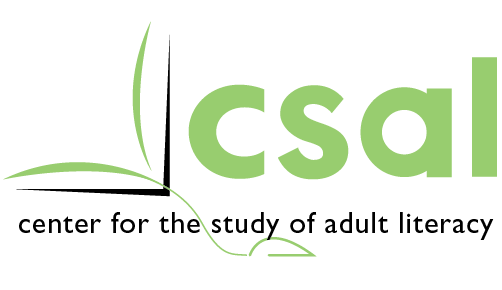Year Six Summary
Every year, nearly 3 million Americans enroll in adult literacy programs to improve their basic skills and some estimates suggest that the need is even greater. Adults in these programs want to increase their literacy skills to improve aspects of their work, family, social, and civic lives. However, we do not completely understand their underlying reading-related strengths and weaknesses, nor do we know the best curricula and teaching approaches to help them reach their reading goals. The focus of our center is to address these areas by attending to the following goals: 1) To collect data on the underlying cognitive and motivational processes that contribute to or impede the reading development of adults who read between the 3.0 and 7.9 grade equivalency levels; 2) To develop and evaluate a multiple component reading intervention for adults who read between the 3.0 and 7.9 grade equivalency levels; 3) To design and collect data from supplemental studies that are aligned with the overall goals of CSAL and are relevant to significant issues in adult education; 4) To engage in national leadership activities that serve the needs of adult education researchers, policymakers, practitioners, and stakeholders; and 5) To disseminate findings of this work.
This report describes our activities from June 1, 2017 through May 31, 2018 in the following areas: a) Data entry/cleansing, b) Intervention activities, c) Data analyses, d) Conducting supplemental and additional studies, and e) Performing other center activities.
All intervention classes were completed with 267 intervention students (in 25 intervention classes) and 112 comparison students completing pre/post-tests during the duration of the pilot studies. Class sizes had a range of 6-16 students with an average of 10.96 students. A range of 93-105 hours of instruction was offered with a mean of 100.06 hours. With one exception, no significant differences were found between the intervention and comparison groups on any of the pretest scores. On the Intrinsic Motivation Inventory: Interest/Enjoyment scale, intervention participants had a significantly higher pretest score (M = 28.83, SD = 7.26) than comparison participants (M = 27.04, SD = 7.54), t (207.9) = -2.11, p = .036. A significant difference was found for gender; the proportion of female participants was significantly greater in the intervention group (74%) than in the comparison group (61%), χ2 (1) = 4.33, p = .037. No significant differences were found between the intervention and comparison groups on age, English proficiency, highest completed grade, and race/ethnicity. Analyses of reading-related test performance indicates the following: a) Items on our reading-related tests tests conform to measurement of a unitary trait. While a few tests show some evidence of misfit on some indices, these same tests fit reasonably well on other indices. We find no strong evidence that these tests for this population are structurally invalid or strongly multidimensional. b) A few of the tests show low sensitivity, variability in sensitivity, and spikes in difficulty which could be sometimes problematic.
During this past year, we maintained and updated our website (csal.gsu.edu). We continued to use AWSTATS to keep track of our “page hits,” with August 2017 representing our lowest “hit” month (5,814) and April 2018 representing our highest (12,834).
Examples of other center activities described in this report include supplemental studies, maintenance of an email distribution list, and conference presentations.
